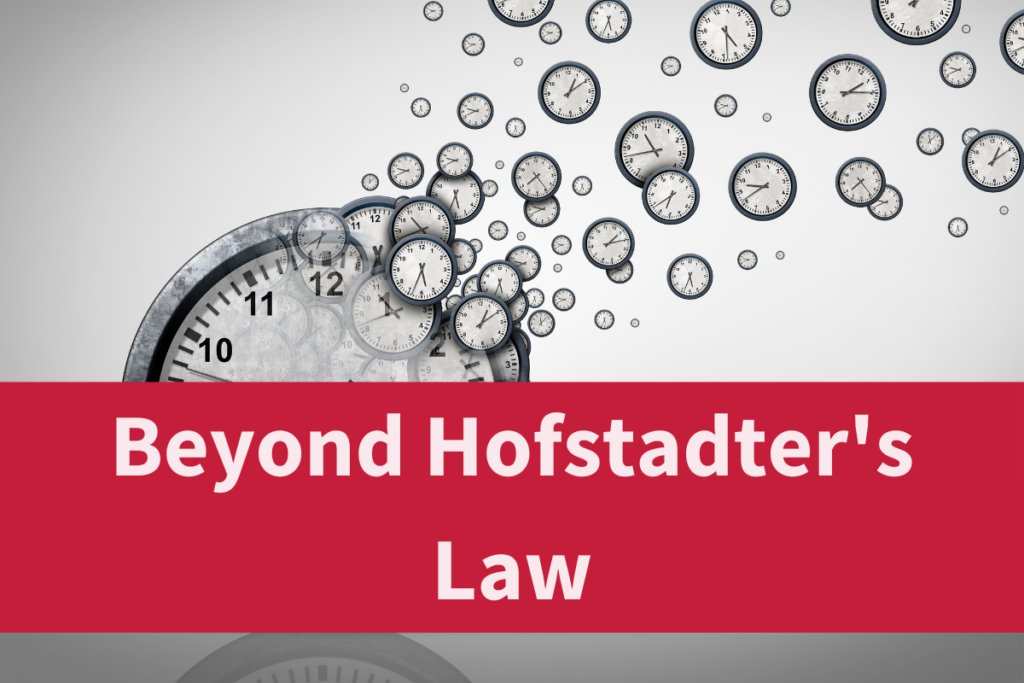A staple of project management the world over, Hofstadter’s Law states: “It always takes longer than you expect, even when you take into account Hofstadter’s Law.”
The law rears its head all over the damn place: rebuilding a website, writing a byline, or building a content team. Whatever operational component you’re working with, it always takes longer than you think — even when you know it’ll take longer than you think.
(Source: xkcd.com)
How does this apply to PR agencies?
I’ve seen agencies fall prey to Hofstadter’s relentless law throughout their content processes. Example:
- “Our client will send feedback on our article draft in five days.”
- *Seven days pass*
- “Hey, did Bob at XYZ get us those edits yet? Let’s remind him on today’s call.”
- *Seven more days pass*
- “Hi, VP. Can you email Bob about those edits? That’d really help.”
- *Three days pass*
- “Hey, look, edits! And there’s a ton of them. And he didn’t like the article’s main points. And he wants to start over. Hop on a call?”
A 240% increase in time spent on one content project. An awesome return on a stock; less so on wasting your team’s time.
The process I outlined above is pretty much unavoidable (at least when you’re starting a client relationship). And some of it is outside your control, yes. However, many agencies skip key project management elements, putting undue performance pressure on teams.
Leaders expect those edits in five days and give their teams inadequate slack if they take longer. The slowdown ripples through more projects, backing up based on dependencies (i.e. needing the right writer for the next piece). Soon, everyone is overwhelmed, and nobody knows how to fix it.
“Great, thanks, Alex. Another problem for me to solve. How do I manage time to account for Hofstadter’s Law?”
Start small. Pick a few timebound projects and track how long it actually takes you to complete them. And I mean complete them. Drafting the article is one part of the process. How long did interviewing SMEs, researching key questions, and handling feedback and edits take?
You need benchmarks and consistent monitoring against those benchmarks to know:
a) How to account for Hofstadter’s Law in your projects
b) Where to adjust the overall process to get ahead of potential slowdowns
Where do you track that data? Some might use massive Kanban boards or detailed tools like Asana or Monday. My go-to rule: The best project management tool is the one people will actually use.
One of my favorite representations of this concept? Costco inventory control:
Use an Excel sheet if that works for you and your teams. Just be consistent in using it.
Lay out your early use cases and see how much of your work matches Hofstadter’s Law. By tracking all this information, you’ll find operational inefficiencies to tweak or places where new tools can help.
Example: Otter’s new interactive AI chat function saves me hours preparing content based on SME interviews. (Sadly, they did not pay me for this shout-out.) I reviewed my time tracking and found that I spent too much time parsing through recorded calls to create thought leadership content. Otter helps me get to the good stuff faster, and I spend more development time writing good copy.
Time and PR Just Don’t Mix, So Do the Best You Can
Time will always be a factor in public relations. Trending topics arise, client contacts quit, and business needs change. But you can manage around those challenges (and Hofstadter’s Law). It starts with knowing what to manage and committing to measuring those objectives.
This article originally appeared in The Executive’s Guide to the Content Galaxy, our company’s newsletter. If you’d like to read more, feel free to subscribe here!



